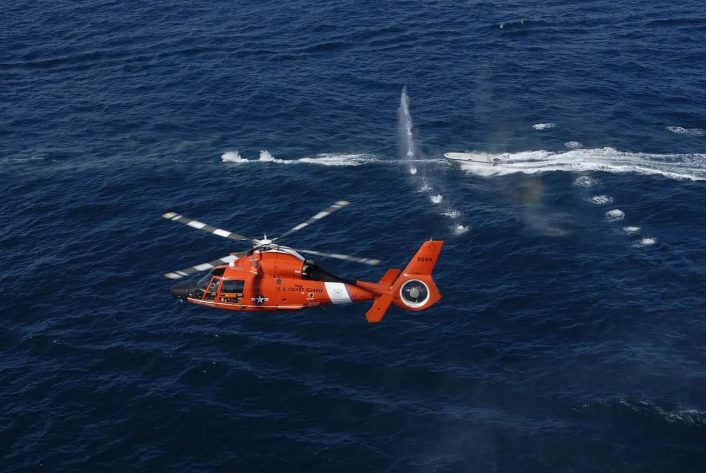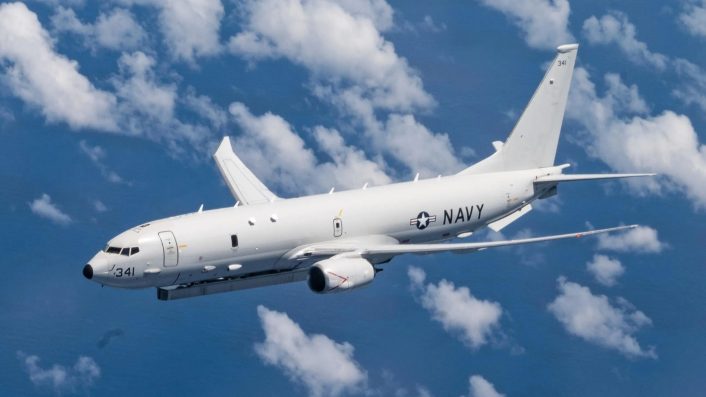The strike, the first of its kind in the Caribbean, destroyed a suspected drug vessel, killing 11, but raised questions on legality and escalation.
The United States military has carried out a lethal strike against a suspected Venezuelan drug vessel in the southern Caribbean, killing 11 people on board. The incident, announced by President Donald Trump on Sep. 2, 2025, represents the first known use of direct military force against a drug cartel’s maritime operations since the deployment of additional U.S. warships to the region.
The attack comes amid a significant build-up of American naval and aerial assets in the region. While celebrated by some officials as a decisive step against narco-terrorism, it has also drawn scrutiny over its legality, proportionality, and broader implications.
Announcement and Initial Details
Speaking to reporters at the White House, President Trump described the operation in stark terms. “We just, over the last few minutes, literally shot out a boat, a drug-carrying boat, a lot of drugs in that boat,” he said, according to Reuters. He later shared a video on Truth Social that appeared to show drone footage of a speedboat being struck, exploding, and catching fire.
In a follow-up statement, Trump asserted that the vessel’s crew were members of Tren de Aragua, a Venezuelan gang designated as a Foreign Terrorist Organization by the U.S. State Department in February. He also claimed the group operates under the control of Venezuelan President Nicolás Maduro, an accusation Caracas denies.
“The strike resulted in 11 terrorists killed in action. No U.S. forces were harmed in this strike,” Trump declared, adding a warning: “Please let this serve as notice to anybody even thinking about bringing drugs into the United States of America. BEWARE!”
— Karoline Leavitt (@PressSec) September 2, 2025
Secretary of State Marco Rubio confirmed the strike, describing it as a “lethal” and “precision” operation against a narco-terrorist vessel. He said the boat was traveling along a common trafficking route in the southern Caribbean and emphasized that such operations would continue. “We are going to wage combat against drug cartels that are flooding American streets and killing Americans,” Rubio stated.
As @potus just announced moments ago, today the U.S. military conducted a lethal strike in the southern Carribean against a drug vessel which had departed from Venezuela and was being operated by a designated narco-terrorist organization.
— Marco Rubio (@marcorubio) September 2, 2025
Unclear Circumstances
Very few details have been released so far. A senior U.S. defense official described the action as a “precision strike,” but provided no details on the platform used to deliver the attack, the type of weapons employed, or the nature of the cargo on board.
The timeline of the events that led to the strike is also missing. As of now, what can be said with enough certainty is that strike happened within the U.S. Southern Command (SOUTHCOM) area of responsibility, in the southern Caribbean, and the weapon involved could be an AGM-114 Hellfire missile.
About two hours before the announcement, an MH-60S helicopter with callsign OUTLW71 (Outlaw 71) was visible on flight tracking websites over the patch of sea between Puerto Rico and Venezuela. While there is no indication whether this asset was involved in the strike as there is no evidence linking it to the incident, the sighting could possibly provide at least an indication about the broad area where it might have happened.
I’m guessing it was with a MH-60 helicopter or MQ-9 Reaper 🤔 OUTLW71 (pronounced on the radio as OUTLAW, MH-60S Sikorsky helicopter) was visible on @flightradar24 around 1600 zulu/GMT today which was around noon eastern standard time about 2 hours before today’s Oval Office news… https://t.co/ZFnApwTlbv pic.twitter.com/P7WeH2nRmQ
— Thenewarea51 (@thenewarea51) September 2, 2025
The helicopter was flying in the San Juan Oceanic Flight Information Region (FIR), which is considered a U.S. controlled airspace managed by the Federal Aviation Administration (FAA) as Puerto Rico is an unincorporated U.S. territory. According to the maps, it appears it was also flying over Puerto Rico’s territorial waters.
OUTLW71 if it was the aircraft that conducted the strike was flying within the SAN JUAN FIR which is US airspace. Not to say foreign governments wouldn’t allow it in their airspace but less diplomacy needed if it happens in US airspace. pic.twitter.com/b0RWAkUXut
— Thenewarea51 (@thenewarea51) September 2, 2025
Unusual Military Escalation
The choice to destroy the vessel outright, rather than seize it and apprehend its crew, stands out as an unusual tactic in U.S. counter-narcotics operations. Traditionally, the U.S. Coast Guard and Navy interdict suspicious vessels, confiscating drugs and arresting suspects. Analysts noted that the strike more closely resembled counterterrorism operations against militant groups.
The incident occurred amid an expanded U.S. military presence in the Caribbean. Seven warships and one nuclear-powered attack submarine are currently operating in the region, alongside approximately 4,500 sailors and Marines. Assets include the USS San Antonio, USS Iwo Jima, USS Fort Lauderdale, and reportedly USS Lake Erie, USS Gravely, and USS Jason Dunham. U.S. P-8 maritime patrol aircraft have also been flying surveillance missions over international waters.
Legal and Human Rights Concerns
While U.S. officials framed the strike as a decisive blow against narco-terrorism, legal experts questioned the legitimacy of the action, expressing concern that the action may violate international law. U.S. officials defended the strike’s legality under the designation of Tren de Aragua as a Foreign Terrorist Organization.
Under the United Nations Convention on the Law of the Sea, to which the U.S. is not a signatory but generally adheres, countries are prohibited from using force against vessels in international waters except under limited conditions such as “hot pursuit.” Even then, the use of lethal measures is expected to be a last resort.

“The use of aggressive tactics must be reasonable and necessary in self-defense,” Prof. Luke Moffett of Queen’s University Belfast told the BBC, warning that the attack could amount to an “extrajudicial arbitrary killing.” Other legal scholars highlighted that the U.S. is not in an armed conflict with Venezuela or the Tren de Aragua group, meaning the individuals targeted were not lawful military combatants.
Professor Michael Becker of Trinity College Dublin argued that labeling cartel members as “narco-terrorists” does not automatically make them valid military targets. Similarly, Prof. Moffett said “Labelling everyone a terrorist does not make them a lawful target and enables states to side-step international law.”
Questions also extend to U.S. domestic law. While the Constitution grants Congress the authority to declare war, successive administrations have argued that the President, as Commander-in-Chief, can authorize certain military actions. Since 9/11, presidents have also relied on the Authorization for Use of Military Force (AUMF) against terrorist groups, though it remains unclear whether that authority extends to drug cartels, says the BBC.
Mixed Reactions
Reactions in Washington were divided. Supporters of the strike framed it as a necessary show of force. Senator Lindsay Graham called it “the ultimate – and most welcome – sign that we have a new sheriff in town,” while Senator Bernie Moreno of Ohio wrote: “Sinking this boat saved American lives.” Critics, however, underscored the precedent set by authorizing lethal strikes against suspected drug traffickers.
The Venezuelan government also pushed back. Communications Minister Freddy Ñáñez claimed that the video released by Trump could have been created with artificial intelligence, pointing to “stylized and unnatural” water effects. Both Reuters and BBC reported that preliminary analysis found no evidence of manipulation, though verification efforts continue.

President Maduro has yet to directly comment, but has previously condemned the growing U.S. military presence in the Caribbean, calling it an “extravagant threat” and pledging “maximum readiness.” The Trump administration has doubled its bounty on Maduro to $50 million, accusing him of supporting drug trafficking and criminal networks, according to Reuters and CNN.
Venezuelan officials have long accused the U.S. of using counter-narcotics as a pretext for regime change. Caracas continues to deny that Tren de Aragua remains active in Venezuela, claiming the group was dismantled during a 2023 prison raid.
Strategic and Regional Implications
The strike may mark a turning point in U.S. anti-drug operations in the Caribbean. If repeated, lethal interdictions would represent a significant escalation from past maritime law enforcement practices. “The use of military force against Latin American drug cartels represents a significant escalation by the Trump administration and could have serious implications for the region,” CNN noted.
The move also aligns with broader U.S. policy toward Venezuela. Trump has consistently sought to pressure Maduro’s government, both diplomatically and militarily. The framing of Tren de Aragua as a terrorist organization under Maduro’s control could tie drug interdiction to Washington’s political strategy in Caracas.
At the same time, the lack of transparency about the strike’s execution, legal basis, and aftermath leaves key questions unanswered. As mentioned earlier, the Pentagon has not released information about the method of attack, the amount or type of drugs on board, or whether attempts were made to stop the vessel through non-lethal means.









